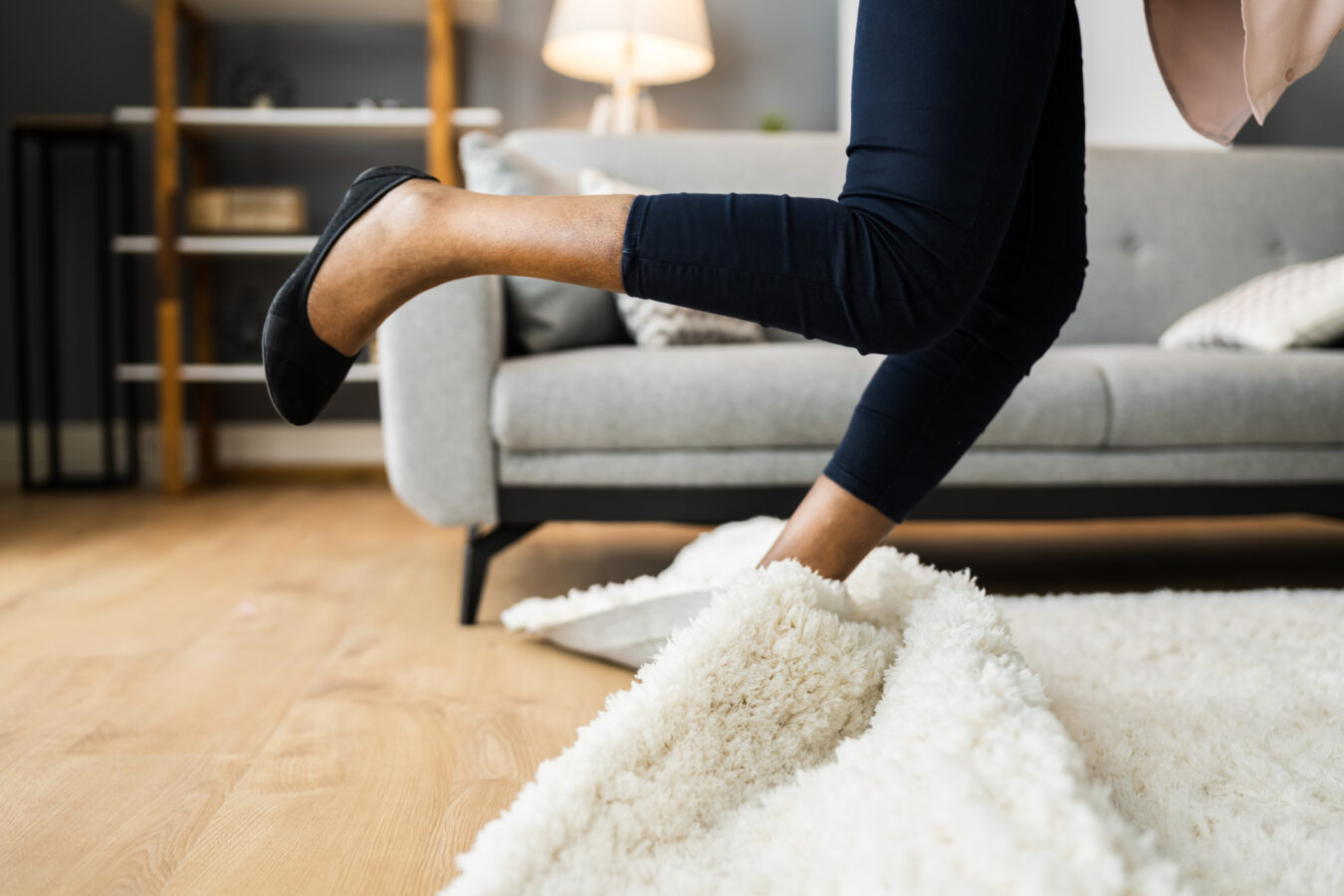
According to the Centers for Disease Control and Prevention (CDC), three million people are treated for fall injuries in emergency departments across the country every year. Nearly three-quarter of all falls happen in or near the home. Poor lighting, clutter, and unsafe flooring are just a few common causes of falls in the home. Fortunately, there are quick and easy changes you can implement to lower your risk of debilitating injuries with these fall prevention tips.
The kitchen is one of the most highly-trafficked areas of the average home. It’s also where many home accidents and injuries happen. The risk of accidents around sharp knives and utensils, hot pans, and open flame makes this room a critical area to focus on with these fall prevention tips.
Cooking often leaves a mess. Wipe up spilled food and liquids quickly to prevent slips. It’s a good idea to keep a hand towel close by for this purpose.
Falls often occur when we lose our balance trying to retrieve hard-to-reach items on a high shelf or in the back of a deep cabinet. Store the ingredients and kitchen tools you use most often on the lower shelves of your pantry or cupboards.
Kitchen mats can be pretty—but they should be practical too. Scatter rugs that aren’t secured to the floor can crumple up and cause a tripping hazard. Use rubber-backed kitchen rugs or cushioned, anti-fatigue mats in the kitchen, bath, and throughout the home. If you use a medical walking aid like a cane or walker, it’s best to avoid using mats and rugs that can get caught under these assistive devices and cause you to lose your balance and fall.
The bathroom is another common site of household falls. Falls can happen as we get in or out of the tub or shower or slip on a wet floor. Here are some modifications and habits to make your bathroom safer.
For added stability in the restroom, mount grab bars beside the toilet and in the inside and outside of your shower or bathtub. A shower chair with rubber-tip bottoms is also helpful for reducing falls.
Condensation and soap scum can make your bathtub, shower, and bathroom extra slippery. Keep up with regular cleaning and dry damp surfaces after right after showering or bathing.
Non-slip mats are essential to prevent falls in the bathroom. Place anti-slip decals along the bottom of the tub and shower as well to reduce your chance of falls while bathing. Flooring in the bathroom and other damp areas should be non-skid as well.
We’ve covered the high-risk areas for home falls. Now let’s tackle the rest of your home.
Without good visibility, we cannot see objects in our path. Replace light bulbs as needed and install lighting in poorly-lit areas in and around your home. Nightlights are ideal for hallways, stairways, and bathrooms. Lighting doesn’t have to be a huge expense. Today, there are a wide variety of solar and battery-operated light sources that don’t require electrical wiring.
Your home should have tightly-fastened handrails on both sides of your stairs. Use them when going up and down the steps and avoid carrying too much in your arms. You need a clear view of where you are going. Non-slip stair treads are another way to prevent falls on steps.
Make it a habit to put items where they belong when you’re done using them. Handbags, shoes, and shopping bags in walkways are common fall hazards. Cords and wires create dangerous tripping hazards. Use cord clips to attach them to furniture and walls so they aren’t dragging on the floor. Instead of placing objects on the steps, keep a basket handy for items that need to go up or down.
Household pets are another tripping hazard. Cats, dogs, and other animals are unpredictable. They can suddenly walk in front of you or between your legs and cause you to have a nasty fall. Restrain animals when someone enters or exits your home. Pay attention to where your pets are while you’re walking in your home.
A grabbing tool is a practical solution to reach items up high or on the ground. Keep it close by and you’ll be less likely to stand on a chair or stepstool. Just as we recommended for the kitchen, keep the items you use often nearby.
Falls are particularly common among older adults simply because of the changes that occur with aging. We will all experience to some degree a decrease in lower limb strength, gait changes, and balance and vision impairment. And because our bones become more fragile over time, seniors are more likely to be seriously hurt in a fall compared to younger people.
For that reason, it is important for older adults to be proactive about preventing falls. In addition to the tips listed above, seniors should have regular checkups, discuss physical changes with their healthcare provider, and schedule a physical therapy screening to assess their fall risk. Even if you feel like you are just slowing down a screen can be helpful to ensure you are safe and can continue to live the life you want. Physical therapy is effective for improving balance, addressing vertigo symptoms, and increasing overall strength and stability. Find a physical therapy clinic near you.
External Sources: